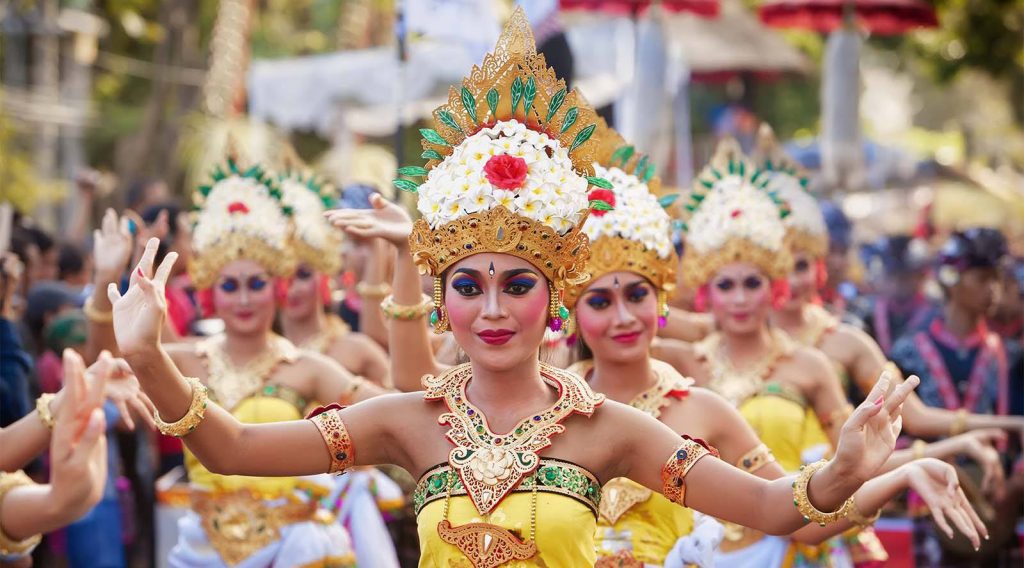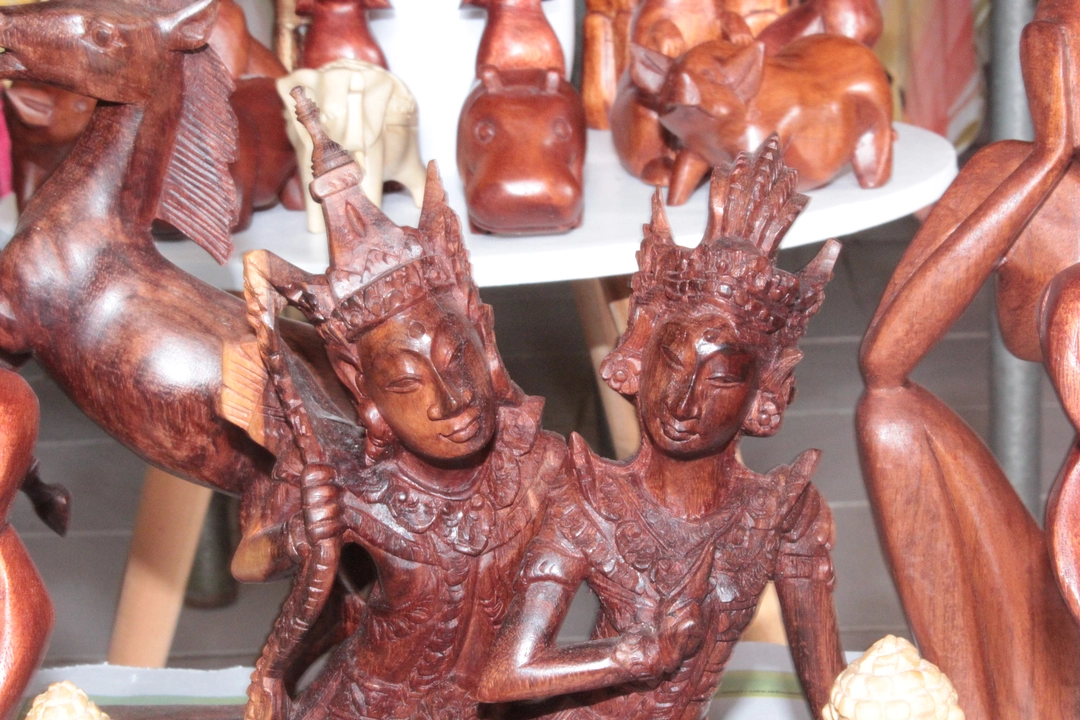Bali Arts Festival 2025: Explore the Island’s Rich Culture – This article guides you through the Bali Arts Festival 2025—a month-long celebration of the island’s rich culture, art, and traditions.
Discover why this festival is the ultimate way to experience Bali’s true soul, and how you can make the most of this unforgettable event.
Every year, Bali comes alive with vibrant colors, rhythmic beats, and a deep sense of spirituality during the Bali Arts Festival. This month-long celebration, starting in 1979, showcases the island’s incredible diversity of culture, art, and traditions. Above all, Whether you’re a first-time visitor or a long-time traveler, this is the perfect opportunity to immerse yourself in Bali’s authentic arts scene.
You Might also like: Explore Ancient Village (Penglipuran Village) on Highlight Of Central Bali
The Bali Arts Festival is not just a cultural showcase—it’s a vibrant window into the heart of the island, where you’ll experience traditional music, dance, drama, and crafts. All in all, Here’s everything you need to know to make the most of this beautiful celebration.

What is the Bali Arts Festival?
The Bali Arts Festival is a highly anticipated annual event, held every June in Denpasar, Bali. Established in 1979, this cultural extravaganza brings together local performers, artists, and craftspeople from all over the island to showcase their talents. Additionally, The festival is a celebration of Bali’s rich heritage, diverse traditions, and artistic expression.
You Might also like: Experience Best Coffee in the World on Highlight Of Central Bali

This year’s theme, Jagat Kerthi: Lokahita Samudaya, is a call for harmony with the universe—an essential message for Balinese culture that emphasizes the unity of humans, nature, and spirituality.Whether it’s through dance, music, or visual arts, this festival highlights Bali’s commitment to preserving its traditions while also embracing contemporary influences.

Why Visit the Bali Arts Festival?
The Bali Arts Festival is more than just a showcase of traditional arts—it’s an invitation to immerse yourself in Bali’s cultural soul. Here are a few reasons why you should not miss it:
Learn about Bali’s Culture: The festival offers a unique opportunity to explore the island’s deep cultural traditions in an interactive way.
Witness Authentic Performances: Experience Bali’s music, dance, and theatrical performances firsthand.
Shop for Local Art: Purchase handcrafted arts and crafts directly from local artisans, and take a piece of Bali’s vibrant culture home with you.
Whether you are an art lover, a culture enthusiast, or simply someone looking to understand Bali beyond its beaches, this festival is a must-see.

Things to Do at the Festival
There is so much to see and do at the Bali Arts Festival that you’ll want to plan your visit carefully.
Accordingly, here’s a look at the key activities:
Grand Opening Parade: The festival kicks off with a colorful parade that features vibrant dancers, traditional musicians, and beautiful costumes. It’s a grand display of Bali’s cultural diversity.
Traditional Dance and Music Performances: Watch stunning performances such as the Barong Dance, Gamelan orchestras, and Wayang Kulit (shadow puppetry). These performances are a highlight and offer deep insight into Bali’s spiritual and artistic traditions.
Cultural Workshops and Demonstrations: Participate in workshops where you can learn how to make traditional Balinese crafts, from batik painting to silver jewelry making.
Food Stalls: Savor Balinese and international cuisines. Taste the island’s famous satay, desserts, and unique dishes like Babi Guling (roast pork) or Nasi Campur (mixed rice with various side dishes).

What Can You See at the Festival?
The Bali Arts Festival is a feast for the senses, offering visitors a chance to experience Bali’s most cherished art forms:
Traditional Dance Performances: Watch iconic dances like the Legong, Barong, and Tari Kecak, where performers wear elaborate costumes and tell stories through dance and music.
Music: Enjoy the sound of Gamelan orchestras, a hallmark of Balinese culture, where gongs, drums, and metallophones create rich, layered sounds.
Art Exhibitions: Visit galleries showcasing Balinese visual art, including intricate wood carvings, paintings, woven textiles, and stone sculptures.
Handicrafts Market: Browse stalls where local artisans sell handmade goods such as batik fabrics, woven baskets, jewelry, and paintings.

How to Get There?
Getting to the Bali Arts Festival is easy:
By Taxi or Ride-Hailing Apps: The festival venues in Denpasar—Bajra Sandhi Monument and the Bali Art Center—are easily accessible from most parts of the island. After all, it’s just a drive from Ngurah Rai International Airport.
By Motorbike or Scooter: For more freedom, renting a motorbike or scooter can be an enjoyable option, especially to navigate the streets of Denpasar and find parking with ease.
Public Transport: Buses and other public transport options are available, although taxis and online ride-hailing services like Grab or Go-Jek are the easiest and most direct ways to reach the festival.

Where is the Bali Arts Festival Held?
The Bali Arts Festival is centered in Denpasar, the island’s capital. The main venues are:
Bajra Sandhi Monument in Renon: This is where the opening parade and many performances are held.
Bali Art Center: Located in Nusa Indah, this venue hosts art exhibitions, cultural performances, and workshops.

Best Time to Visit the Bali Arts Festival
The best time to visit the Bali Arts Festival is during the opening ceremony and the evening dance performances. These events typically run throughout June, with Kecak Dance performances happening from 18:00 to 19:00 PM every evening. Make sure to arrive early to secure a good seat for the Kecak Dance, which is a crowd favorite.Opening Parade usually starts early in the morning, so be prepared to arrive by 9:00 AM if you want to catch the full spectacle.

Ready to Experience Bali’s Vibrant Soul?
Mark your calendar for June 2025 and get ready to experience the Bali Arts Festival, a celebration of culture, harmony, and creativity that you’ll remember long after the festival ends. All things considered, Whether you’re here for the art, the performances, or the culinary delights, the festival has something for everyone.Don’t miss out on this unforgettable cultural journey! Get ready for a colorful and spiritual experience like no other, and dive deep into Bali’s incredible traditions.

